
Portugese laurier (Prunus lusitanica ‘Angustifolia’) ⋆ Bast de Plantgigant
Portuguese laurel problems are chiefly related to drought, which can cause poor growth and excessive leaf yellowing, and to wind exposure. While resistant to most pests and diseases, it is susceptible to some leaf infections and vine weevil infestation, which can be lethal. Yet most gardeners know that it ain't as simple as planting a hedge.

Kenmerken van de Portugese laurier Liegesursable
Zo gaat de jonge plant zich goed vertakken en krijg je een volle haag. Je snoeit een Portugese laurier op stam met een schone en scherpe snoeischaar of met een heggenschaar. Voor dikke takken gebruik je een snoeizaagje. Draag altijd handschoenen tijdens het snoeien om huidirritatie te voorkomen.

Laurierkers / Portugese Laurier Prunus Lusitanica Angustifolia 150175cm Haagplantenheijnen.be
Portugal Laurel, Cherry Bay, Portuguese Laurel Cherry. Native to the Iberian Peninsula, Prunus lusitanica (Portugal Laurel) is a beautiful, large evergreen shrub or small tree with dark brown bark, glossy dark green, leathery leaves (5 in. long or 12 cm), and stems of a lovely deep rhubarb color. It is decorated in late spring or early summer.

Portugese laurier (Prunus lusitanica) snoeien, planten... • Intratuin
Herkomst. De familie van de Prunus is enorm. Grote families komen voor in Europa, een groot deel van der Sierkersen komen uit Japan, maar ook andere mooie soorten komen uit de gematigde gebieden van Noord-Amerika. Kenmerken en verzorging. De Portugese Laurier is een goed alternatief voor de echte Laurier, want die is niet goed winterhard.
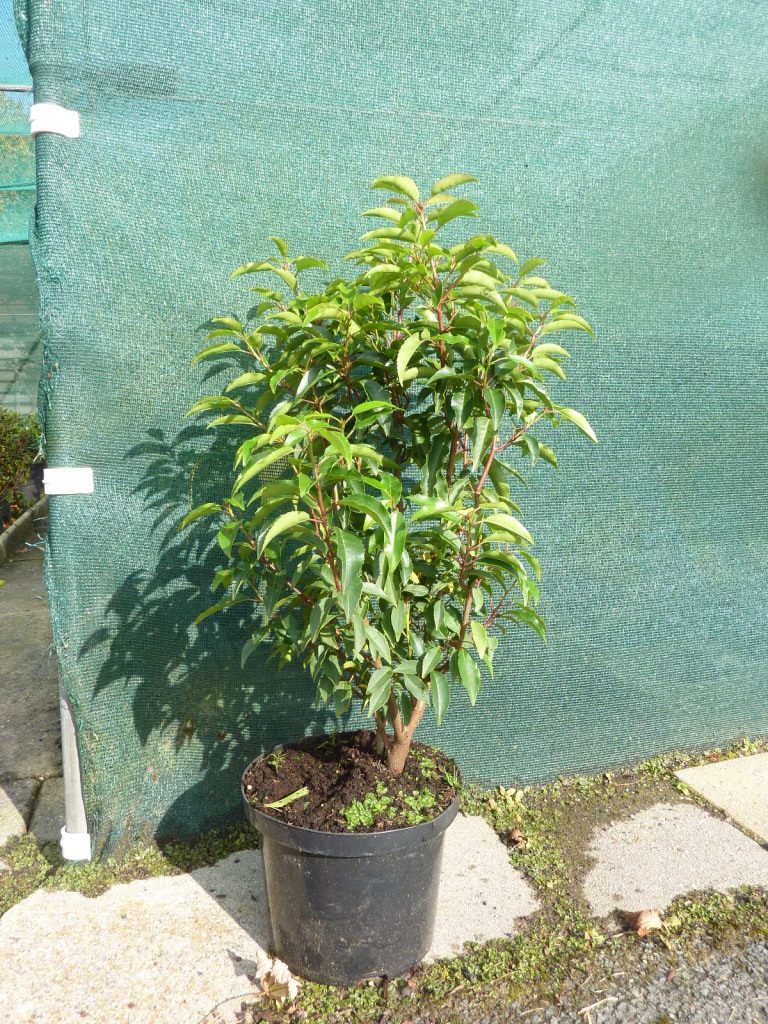
PRUNUS LUSITANICA ANGUSTIFOLIA (PORTUGESE LAURIER) Prins & Tuin
When planting a Portuguese laurel hedge, space plants at least 60cm apart. Before planting, prepare the soil by adding organic matter such as compost or well-rotted manure to improve drainage and fertility. Dig a hole slightly larger than the root ball of the plant, place the plant in the hole, and backfill with soil.
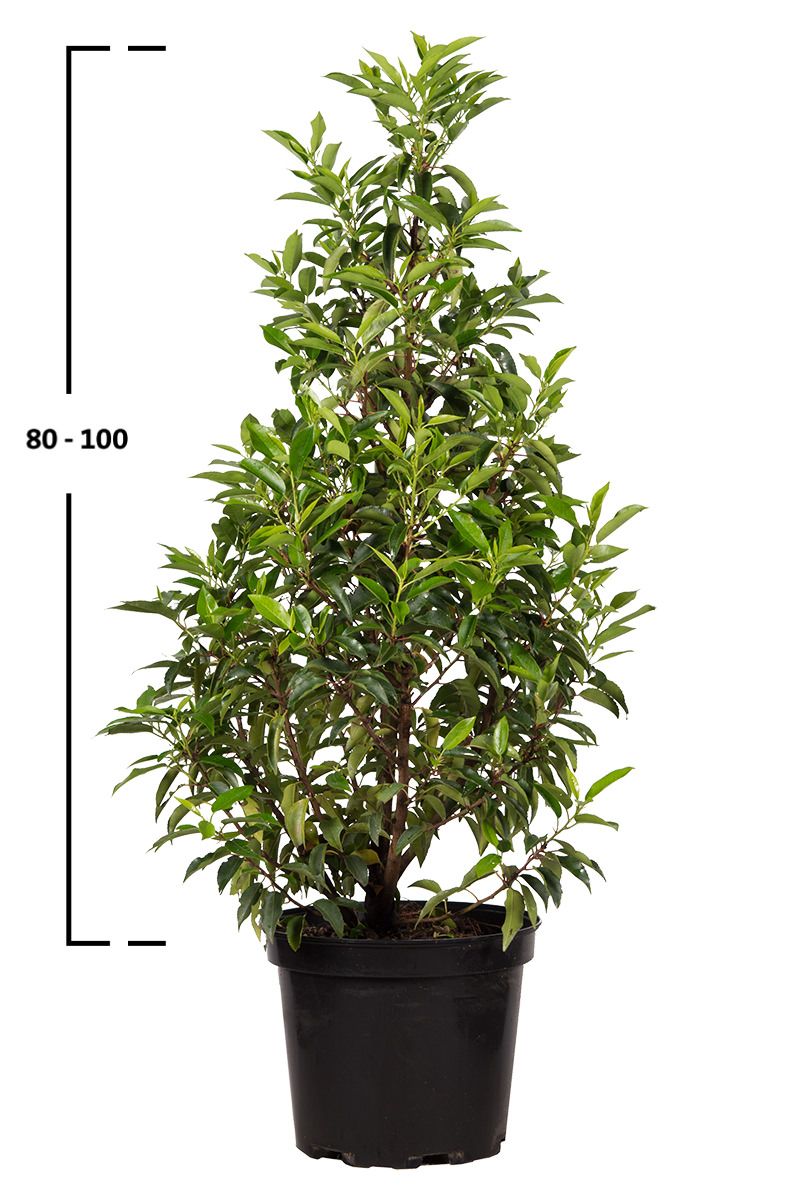
Portugese laurier (Prunus lusitanica) Garmundo
De Portugese Laurier is een winterharde plant die temperaturen tot -16 °C kan verdragen. Deze groeit ook goed in schaduw of volle zon. Hieronder de stappen die u zou moeten volgen bij het planten van een Portugese Laurier. Stap 1: Maak de geselecteerde plaats gereed voor het planten.
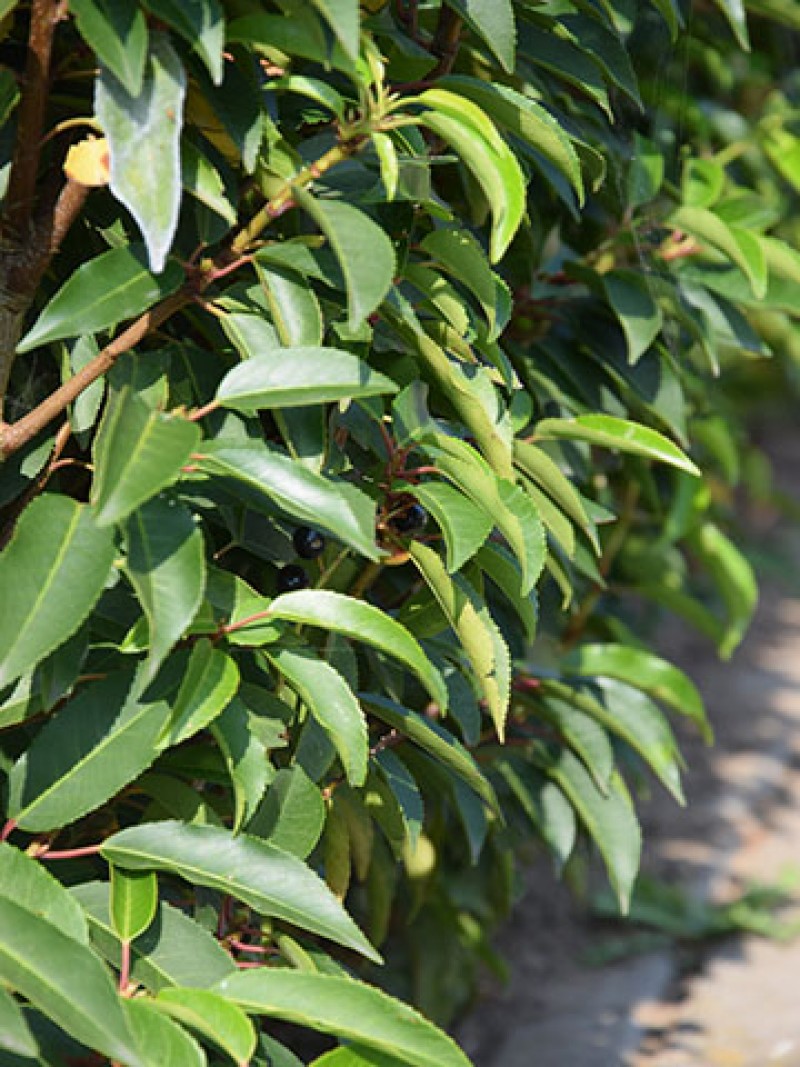
Prunus Lusitanica Eigen kwekerij Portugese laurier Coniferen.nl
Prunus lusitanica, the Portuguese laurel cherry or Portugal laurel, is a species of flowering plant in the rose family Rosaceae, native to southwestern France, Spain, Portugal, Morocco, and Macaronesia (the Azores, Canary Islands and Madeira).. The split between the two subspecies (subsp. azorica, found in the Azores, and subsp. hixa / subsp. lusitanica, found elsewhere) is dated around the.

Portugese Laurier (Prunus lusitanica) D 18 cm kopen Intratuin
Mooie groene Prunus Portugese laurier & Laurierkers Heester Bekijk in onze winkels • Geweldig groen. Laden.. Vandaag besteld binnen 1-3 dagen bezorgd* Gratis afhalen in. Gebruik van deze site, als onderdeel van Intratuin Nederland B.V., betekent dat je de algemene voorwaarden accepteert en waar van toepassing de algemene voorwaarden van.

laurier du Portugal (prunus lusitanica)
Portugal Laurel is an evergreen shrub or tree in the rose family native to Portugal and Spain. It grows 10-2- feet tall and wide, taller if pruned to a tree form. As a shrub, it is dense and rounded in form and can be pruned as a hedge. The leaves are glossy dark green and in spring there are fragrant clusters up to 6-10 inches long of white.

Een portugese laurier voor in de tuin Liefdestuin
Portugal Laurel will grow to be about 20 feet tall at maturity, with a spread of 20 feet. It has a low canopy, and is suitable for planting under power lines. It grows at a medium rate, and under ideal conditions can be expected to live for 50 years or more.

Portugese Laurier Prunus Lusitanica Azorica Bestel bij BoomNL BoomNL
De prunus lusitanica 'Angustifolia', in Nederland ook wel de Portugese laurier genoemd, is een compacte haagplant. De bladeren zijn klein en donkergroen van kleur. Aan het einde van het voorjaar krijgt de laurier prachtige, witte bloemtrossen die tussen de bladeren verschijnen. In het najaar komen hier rode bessen bij.
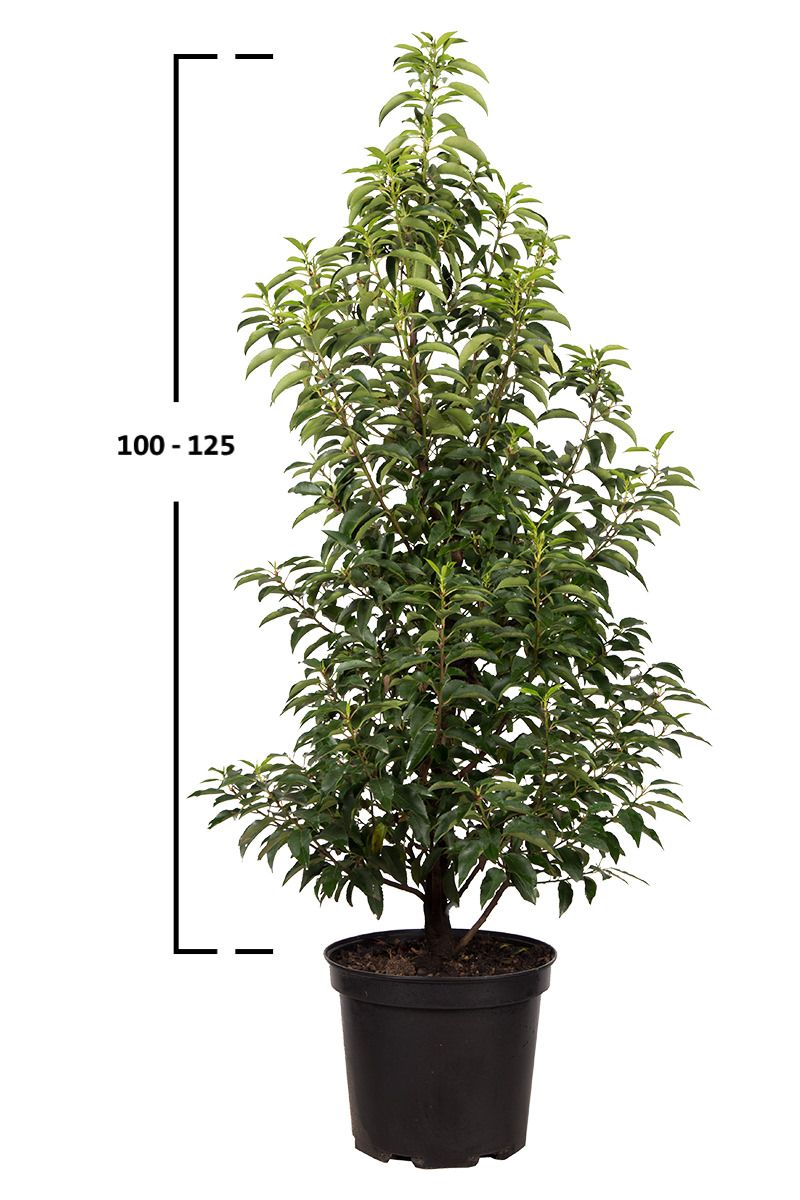
Portugese laurier (Prunus lusitanica) Garmundo
Once the root balled Prunus Lusitanica plants are in the ground, we recommend some light pruning. Trimming the top (and sides if necessary) is essential for the successful establishment of the cultivar. The next major task is to strike the right balance with watering. Portuguese Laurel is fairly demanding when it comes to optimal soil moisture.

Portugese laurier (Prunus lusitanica) Directplant
Iedere laurierkers of Portugese Laurier is heel geschikt om een haag mee te vormen. De laurierkers wordt hier wel iets meer voor gebruikt omdat deze wat sneller groeit. Zo'n 30-40 centimeter per jaar. Je kunt deze planten dus ook prima "op de groei" kopen. Een Portugese laurier groeit iets minder snel; zo'n 15 centimeter per jaar.

Portugese laurier (Prunus lusitanica) snoeien, planten... • Intratuin
Portuguese laurel (Prunus lusitanica) is the hedging shrub that gardening legend Monty Don called 'superior in every way' to the cherry (or English) laurel, its main rival for hedge glory.Still, if you own or are planting a Portuguese laurel hedge, this doesn't mean it'll sprout up whatever you do - some forward planning and a little thought is needed.
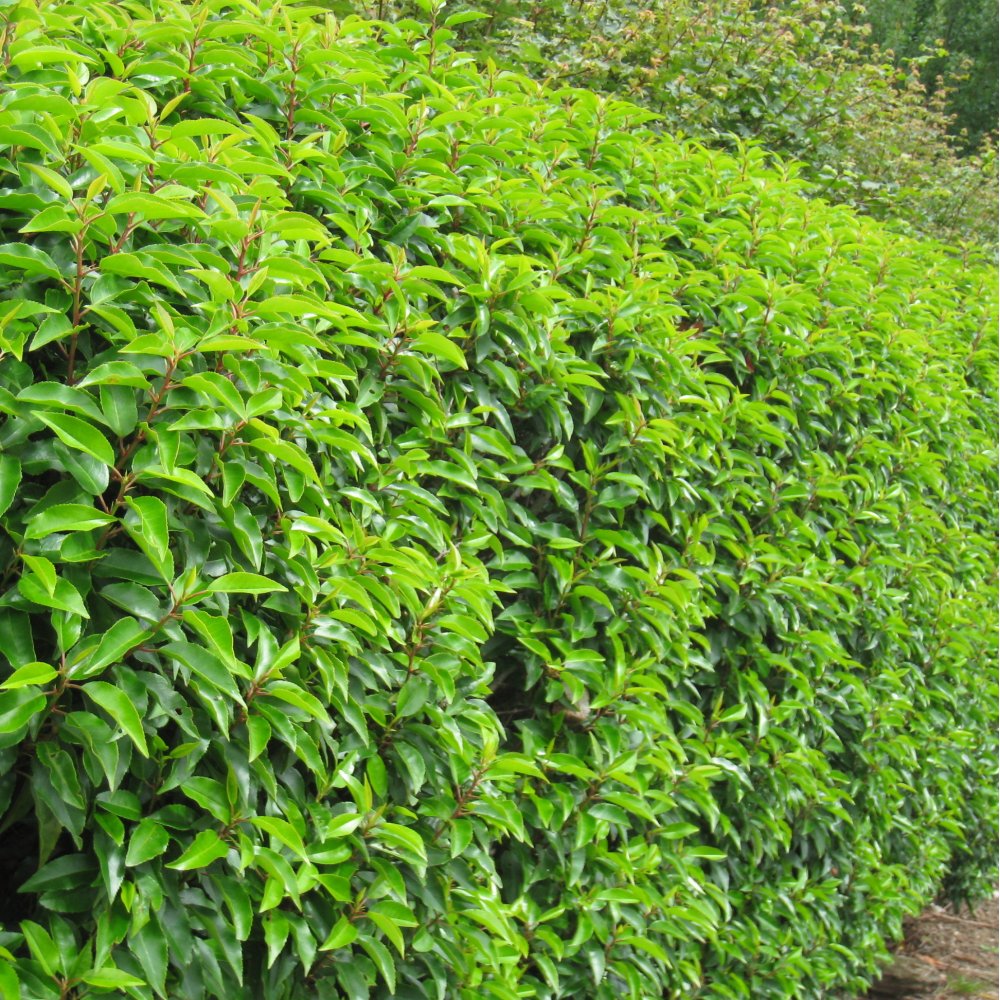
Prunus Lusitanica / Portuguese Laurel Caragh Nurseries
Omschrijving. De familie van de Prunus is enorm. Grote families komen voor in Europa, een groot deel van der Sierkersen komen uit Japan, maar ook andere mooie soorten komen uit de gematigde gebieden van Noord-Amerika. De Portugese Laurier is een goed alternatief voor de echte Laurier, want die is niet goed winterhard. Deze wel!
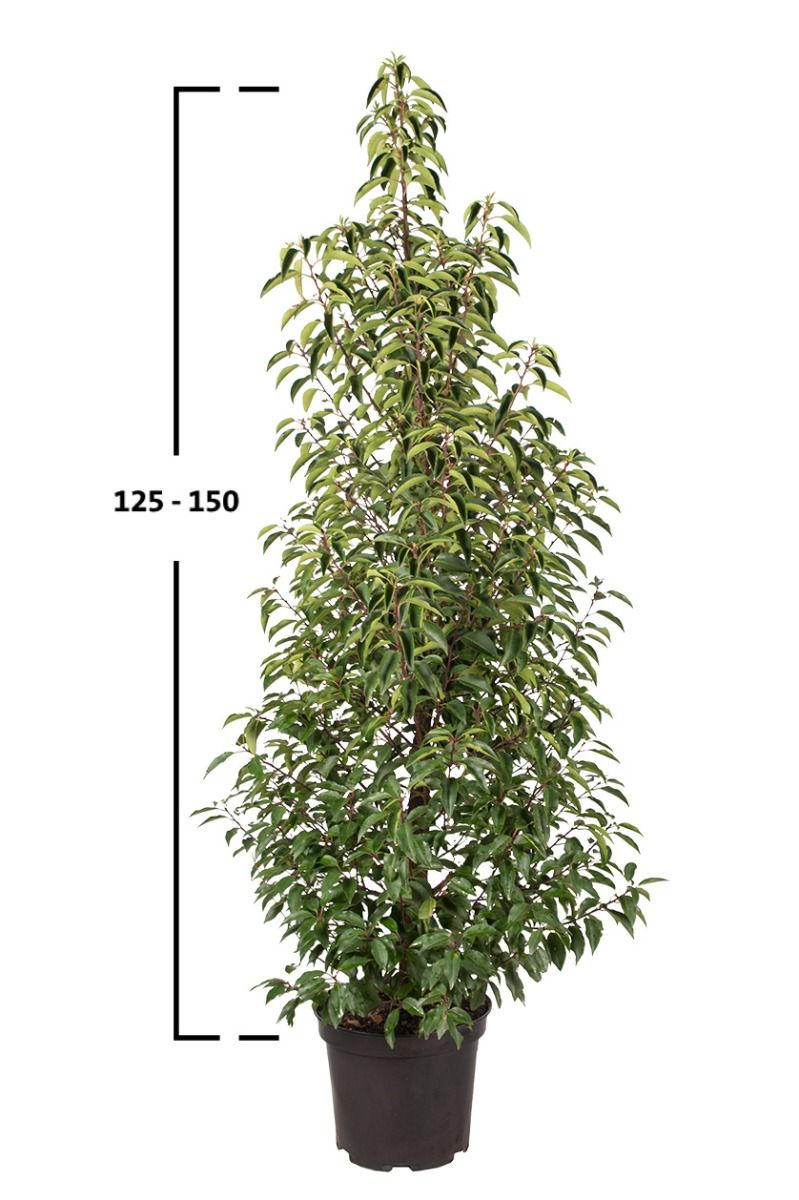
Portugese laurier (Prunus lusitanica) Garmundo
Portugal laurel is a beautiful evergreen shrub with deep dark green leaves.. Key Portugal laurel facts. Name - Prunus lusitanica Family - Rosaceae Type - shrub, bay. Height - 6½ to 20 feet (2 to 6 meters) Exposure - full sun. Foliage - evergreen - Flowering - spring - Fruits - fall (inedible). It bears nice blooms in summer and colored berries in fall and winter.